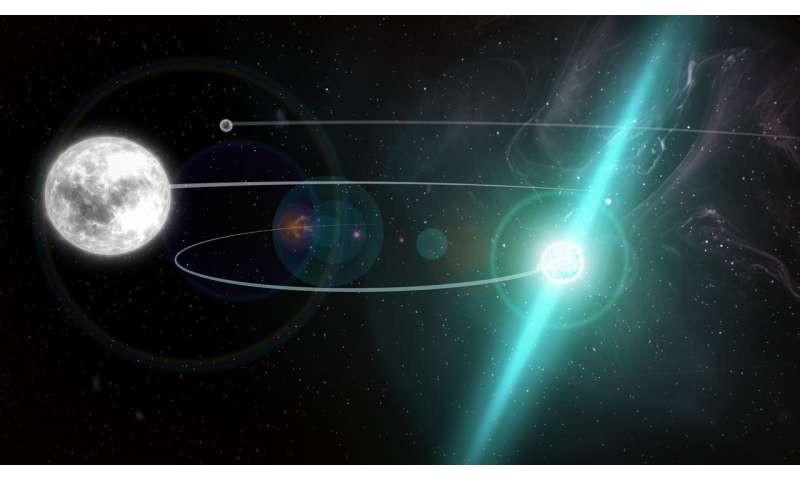Best of Last Week – Einstein found right again, how Uranus got its shape and evidence of cannabis easing pain lacking

It was a good week for physics as an international team of researchers found that Einstein got it right again—weak and strong gravity objects fall the same way. Using data from the Green Bank Telescope, they tested the Strong Equivalence Principle and found it passed, even for the most extreme scenarios. And a team at the University of Illinois at Urbana-Champaign found that water compresses under a high gradient electric field, which could be useful for designing new types of biomolecules filters.
It was also a good week for space research, as a team led by a group at the Max Planck Institute for Astronomy announced the first confirmed image of a newborn planet caught with ESO's VLT—it has been named PDS 70b. Also making headlines was a team led by a group at the University of Warwick, who announced that they had seen a beam of light from the first confirmed neutron star merger emerge from behind the sun. And a team at Durham University announced that they had found evidence suggesting that a cataclysmic collision had shaped Uranus' evolution—which led to its tilt and freezing temperatures.
In other news, a team at Caltech announced that they had created a DNA-based artificial neural network able to recognize "molecular handwriting". And a team of neuroscientists at the University of Alberta reported that they uncovered the secret to intelligence in parrots—the medial spiriform nucleus. And a combined team of researchers with Seoul National University and Yonsie University, both in Korea, found that feeling young could mean your brain is aging more slowly. Also, a team with members from across the U.S. found evidence suggesting that our human ancestors walked on two feet but their children still had a backup plan—good climbing skills.
And finally, if you are one of the millions of people who use marijuana as a way to reduce chronic pain, you might be fooling yourself. After conducting one of the longest studies ever of its kind, a team at UNSW Sydney found no strong evidence that cannabis reduces chronic pain.
© 2018 Science X